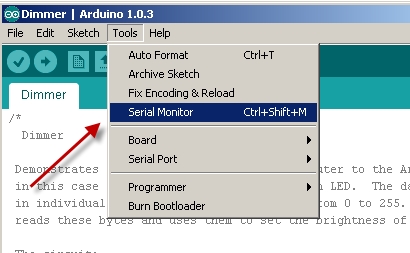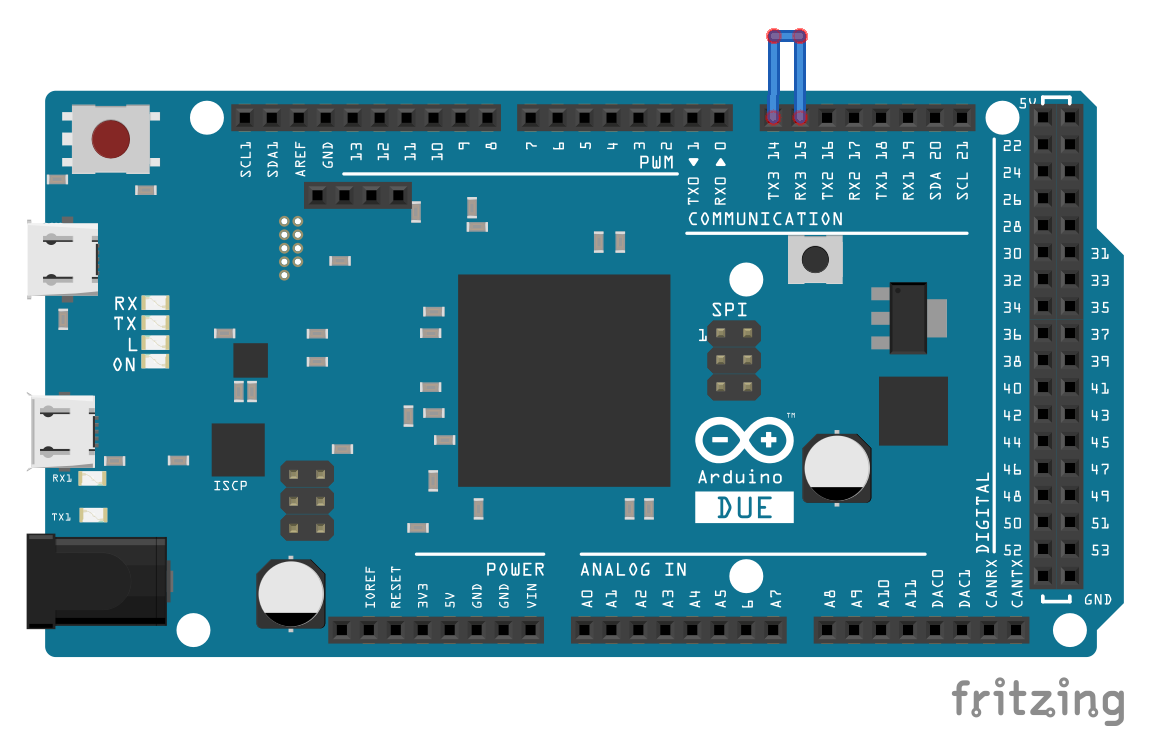

- Arduino serial read how to#
- Arduino serial read software#
- Arduino serial read code#
- Arduino serial read series#
Serial.println(servo1) //print to serial monitor to see parsed results The serial library has functions like serial begin, read, available, parseInt, parseString, parseFloat, print, so on and so forth. For serial communication, we can use the built-in Arduino Serial Library.
Arduino serial read software#
Servo2 = readString.substring(4, 8) //get the next four characters Arduino libraries put together a bunch of software functions that help you with specific tasks. Servo1 = readString.substring(0, 4) //get the first four characters expect a string like 07002100 containing the two servo positions Serial.println(readString) //see what was received ReadString += c //makes the string readString Serial.println("two-servo-test-1.0") // so I can keep track of what is loadedĭelay(3) //delay to allow buffer to fillĬhar c = Serial.read() //gets one byte from serial buffer Myservo1.attach(6) //the pin for the servo control Servo myservo1 // create servo object to control a servo two servo setup with two servo commands

Powering a servo from the arduino usually DOES NOT WORK. for writeMicroseconds, use a value like 1500 zoomkat 12-13-11 serial servo (2) test To start the Serial Monitor, click the Serial Monitor toolbar icon as shown in.
Arduino serial read code#
If you can attach a delimiter to each value sent to keep the values seperate (like using a comma, 254,128,200,90,), then possibly simpler code can be used. The Arduino Serial Monitor function can display serial data sent from Arduino.
Arduino serial read how to#
The below shows how to capture a string and convert it into a number for use for servo control. Using this article, we can print or send any type of data or instruction to devices.You can capture the values as a string, and then convert the string into a number. Arduino is a versatile board so it can send instructions to different devices to do this we use these two serial functions. When it comes to reading and writing data on the serial monitor, Serial.write() and Serial.read() functions are used. In the last part of code an array is written using serial write on the serial monitor.

Next a new line break is given followed by a string which represents “ ”. Digital Read Serial Read a switch, print the state out to the Arduino Serial Monitor. Blink Turn an LED on and off every second. Bare Minimum code needed The bare minimum of code needed to start an Arduino sketch. In Serial.write() code first we begin serial communication using baud rate then write a “ $” character using its ASCII value which equals to 36. Read a potentiometer, print its state out to the Arduino Serial Monitor. Serial.write (array_new, 7 ) /* an Array is written */ Serial.write ( " \n" ) /* String will be written with new line */īyte array_new = Serial.write ( '\n' ) /*A new line character will be written */ Serial.write ( 36 ) /*byte will be written having value 36 = > '$'character */ Serial write can be declared in three different formats as shown below: Serial write is simpler and faster as compared to serial print because serial write returns data in binary while serial print converts data from ASCII to binary. To send digits of numbers represented by characters user Serial.print() instead of Serial.write() function. Serial.write() function returns the total number of bytes written.
Arduino serial read series#
Data can either be sent as s byte or series of bytes. Serial.write() Arduino functions send data serially in the form of binary. Here we type the word “ Hello” which is shown in output terminal as follows: The data will be read by serial read and shown on serial monitor. Type any word on the serial monitor and press Ctrl+Enter. In the loop section if condition is used to check whether any data is available at serial port or not if the data is available, it will store the read data into variable ByteReceived and using Serial.print() the received data is printed on serial monitor. Serial.print ( " Received Serial Data is: " ) Ībove code initialized a new variable at start with name “ ByteReceived” next in void setup part serial communication is begin using baud rate. prints the received data on serial monitor check for the serial data at serial port Serial.begin ( 9600 ) // Serial communication begin to read data Int ByteReceived = 0 // INT for received serial data


 0 kommentar(er)
0 kommentar(er)
